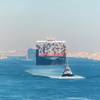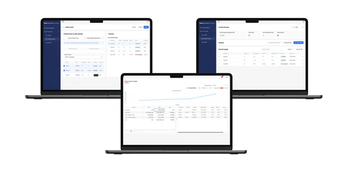The uncertainty around the direction of the tanker market has increased since the start of 2016. At current production levels, the markets for both crude oil and (certain) refined products seem oversupplied, which supports healthy spot rates for both crude oil and product tankers.
Tanker market bulls argue that if crude producers keep pumping oil at full tilt and refiners continue to process it at high levels, the tanker market will have another banner year. Tanker rates will be particularly strong if the oversupplied oil markets lead to significant levels of floating storage.
Although reports continue to surface about the potential for floating storage, actual market activity has been fairly limited so far. The argument of the tanker market bears centers around the expectation that low oil prices and pressure on refining margins will ultimately lead to cutbacks, leading to a reduction in tanker demand, at the exact time that tanker supply (in particular of large crude tankers) is expected to increase.
This could lead to a significant decline in tanker rates. Without making any predictions as to which scenario is more likely, in this opinion we would like to explore the downside case.
To a large extent, crude tanker demand is driven by how much oil refineries process worldwide. In simple terms, refinery throughput and utilization depends on how much money they make converting crude into refined products, i.e. the refining margin.
Refining margins typically improve when crude oil prices decline, as refined product prices lag those of crude.
As refining margins improve, refiners are incentivised to increase their utilization rate and import more crude. This is what happened in 2014. Crude oil prices decreased from more than $100 per barrel in June 2014 to less than $50 in December of the same year. Throughout 2015, oil prices declined further and in February of 2016, Brent fell below $30 per barrel for the first time since 2003.
As the price of crude oil fell, refining margins expanded. The average Brent Cracking Margin for OECD Europe increased from $1.72 per barrel in May 2014 to peak at $10.05 in August 2015.
The average utilization rate of the refineries in OECD Europe increased from 75% to 88% during the same period. Since the middle of 2015, Brent cracking margins have come down significantly.
Later in the year, refinery utilization rates started to decline as well. When observing weekly data for 2016 to date, it seems that the margin erosion has accelerated. All the main U.S. and International Crack Spreads (NWE Brent 3:2:1, Asia Tapis 3:2:1 and AG Dubai 3:2:1) have fallen well below the levels of the same period in 2014 and 2015 and in several cases below their 5-yr range.
While some of the data is still preliminary and the trend could reverse, one could make the case that the golden age of refining is running on fumes and a slowdown is in the cards. Amid weakening economic sentiment, oil demand growth is decelerating.
The IEA, for example, expects global oil demand in 2016 to grow by 1.3%, well below the 1.8% growth we have seen in 2015. For the OECD countries, the difference is especially stark: from 1.0% growth in 2015 down to 0.1% growth in 2016.
As long as oil producers keep their taps open, the tanker market may not feel the impact, but continued high OPEC (and non-OPEC) output is not a foregone conclusion. A preliminary agreement between OPEC members Saudi Arabia, Venezuela, Qatar and non-member Russia to cap their production at January 2016 levels, was the first meaningful response by oil producing countries since prices collapsed. It was also the first time in 15 years that there was an agreement between OPEC and non-OPEC countries.
This is only a first step, and success depends on the participation of other large producers, in particular Iran and Iraq, it could lead to production cuts down the road.
An oil market scenario where refiners cut runs and producers limit output, combined with a significant inventory overhang (both crude and product) paints a gloomy picture for the tanker market. Let’s hope this is not the chocolate we’re gonna get!










